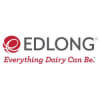The following is a guest post from Jeff Snyder, founder and chief inspiration officer at Inspira Marketing Group.
When the pandemic first hit the United States, shoppers prepared for lockdown by stockpiling their pantries with essentials, including nonperishable foods, paper products and cleaning supplies. In turn, supply shortages forced people to try products and brands outside of their usual picks; McKinsey & Co. research found that 75% of consumers interacted with alternative brands or explored new grocery fulfillment methods, such as delivery services and curbside pickup options. All of this experimentation occurred despite the suspension of in-store product sampling.
As digital fulfillment methods gained popularity and trips to the store became less frequent, brands had to adapt to the digital world to connect with consumers. Through virtual experiences and other online marketing tactics, brands sought to reach consumers where they were: on their screens. Those that adapted successfully became part of the $95.82 billion online grocery sales boom of 2020, as identified by eMarketer. In 2021, this figure reached $97.7 billion, according to Brick Meets Click.
The growth of online grocery shopping throughout the pandemic reminded brands that it’s time to invest in online customer experiences. Behavioral trends are changing, so CPG professionals need to meet customers where they are.
Expanding audiences through positive consumer experiences
Online grocery shopping sales are expected to represent 20.5% of sales in the next five years, according to a report by Mercatus and Incisiv. Although people will continue to use grocery delivery services more than they did prior to the pandemic, demand is bound to decrease as more people feel comfortable shopping in stores again. In this new environment, engaging both in-person and online audiences is the key to success.

Brands also need to remember that many shoppers are trying to save money this year. Despite clear signs of an economic recovery, PwC reports that the post-pandemic consumer is still price-conscious. Brands can’t count on consumers picking more expensive options just because they’re considered reliable. As a result, sampling will be necessary to introduce consumers to new products and alternative options.
According to research by SheSpeaks, 92% of shoppers say positive experiences with products are the main reason they’d consider buying them. This experience can come in many forms, but sampling has always been an effective tool for food and beverage brands. Sampling drives a 57% increase in brand awareness, a 48% increase in purchase intent, and a 55% increase in recommendation intent, according to SheSpeaks. Just one question remains: How can food and beverage companies connect with customers via sampling in a post-pandemic world?
Sampling opportunities for today’s consumer
Before the pandemic, in-store shoppers experienced new food brands through sampling experiences in grocery aisles. This fun and fruitful way of piquing interest in products has been around for decades, but some consumers may be resistant to this method of experiential marketing in today’s environment. As a result, food and beverage brands need to rethink how sampling looks moving forward. Here are some potential opportunities:
Send free samples to people’s homes. According to a survey by Morning Consult, 70% of respondents said they would be interested in signing up to receive free food and beverage samples by mail. And there’s no reason to stop at samples. During the pandemic, some brands sent out entire meal kits to consumers to prepare during a virtual cooking class. For example, meal delivery service Sunbasket gave away food gifts and offered free shipping so customers could try its products at no extra cost.
Pursue partnerships. One way to showcase products is by partnering with other brands to demonstrate their use in a natural context. For example, Colorado-based startup Showplace connects brands with Airbnb and Vrbo hosts to place samples in their homes. Brands benefit from the halo effect it creates for guests who use the samples while they’re relaxed and in vacation mode. Companies that form these alliances can gain insight into consumer behavior, how their products are perceived, and more.
This strategy isn’t limited to the travel industry; the opportunities for partnerships are endless. For example, food and beverage brands looking to connect with fitness enthusiasts might consider partnering with a gym or a fitness studio to offer samples of sports drinks or protein bars.
Embrace experiential marketing. According to a United Talent Agency study, 96% of consumers plan to return to live events once they are deemed safe. With pandemic-related restrictions across the country loosened, live events like sports, concerts, and festivals present the perfect opportunity to create an immersive experience around sampling efforts.
This type of experiential marketing offers many benefits, including engagement and the opportunity to build long-term relationships with consumers. By associating products with live events that people are excited to experience, brands can elevate people’s perceptions of those products.
Consumers are eager to return to live events and the experiences they enjoyed before the pandemic, and brands will have to prepare to deliver. This includes introducing new products to customers through unique approaches to sampling.





















